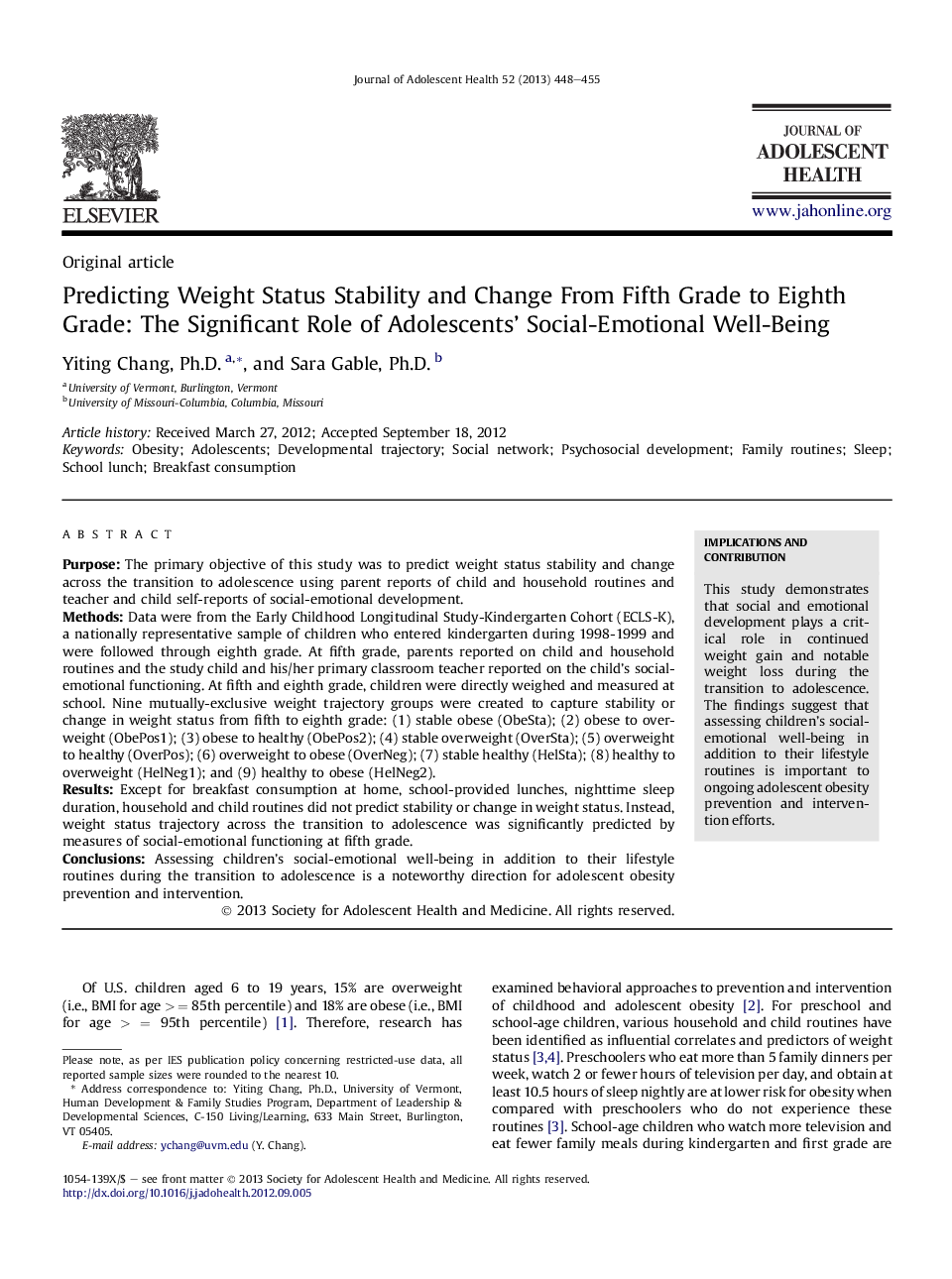| Article ID | Journal | Published Year | Pages | File Type |
|---|---|---|---|---|
| 1079409 | Journal of Adolescent Health | 2013 | 8 Pages |
PurposeThe primary objective of this study was to predict weight status stability and change across the transition to adolescence using parent reports of child and household routines and teacher and child self-reports of social-emotional development.MethodsData were from the Early Childhood Longitudinal Study-Kindergarten Cohort (ECLS-K), a nationally representative sample of children who entered kindergarten during 1998-1999 and were followed through eighth grade. At fifth grade, parents reported on child and household routines and the study child and his/her primary classroom teacher reported on the child’s social-emotional functioning. At fifth and eighth grade, children were directly weighed and measured at school. Nine mutually-exclusive weight trajectory groups were created to capture stability or change in weight status from fifth to eighth grade: (1) stable obese (ObeSta); (2) obese to overweight (ObePos1); (3) obese to healthy (ObePos2); (4) stable overweight (OverSta); (5) overweight to healthy (OverPos); (6) overweight to obese (OverNeg); (7) stable healthy (HelSta); (8) healthy to overweight (HelNeg1); and (9) healthy to obese (HelNeg2).ResultsExcept for breakfast consumption at home, school-provided lunches, nighttime sleep duration, household and child routines did not predict stability or change in weight status. Instead, weight status trajectory across the transition to adolescence was significantly predicted by measures of social-emotional functioning at fifth grade.ConclusionsAssessing children's social-emotional well-being in addition to their lifestyle routines during the transition to adolescence is a noteworthy direction for adolescent obesity prevention and intervention.
